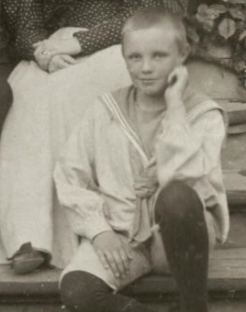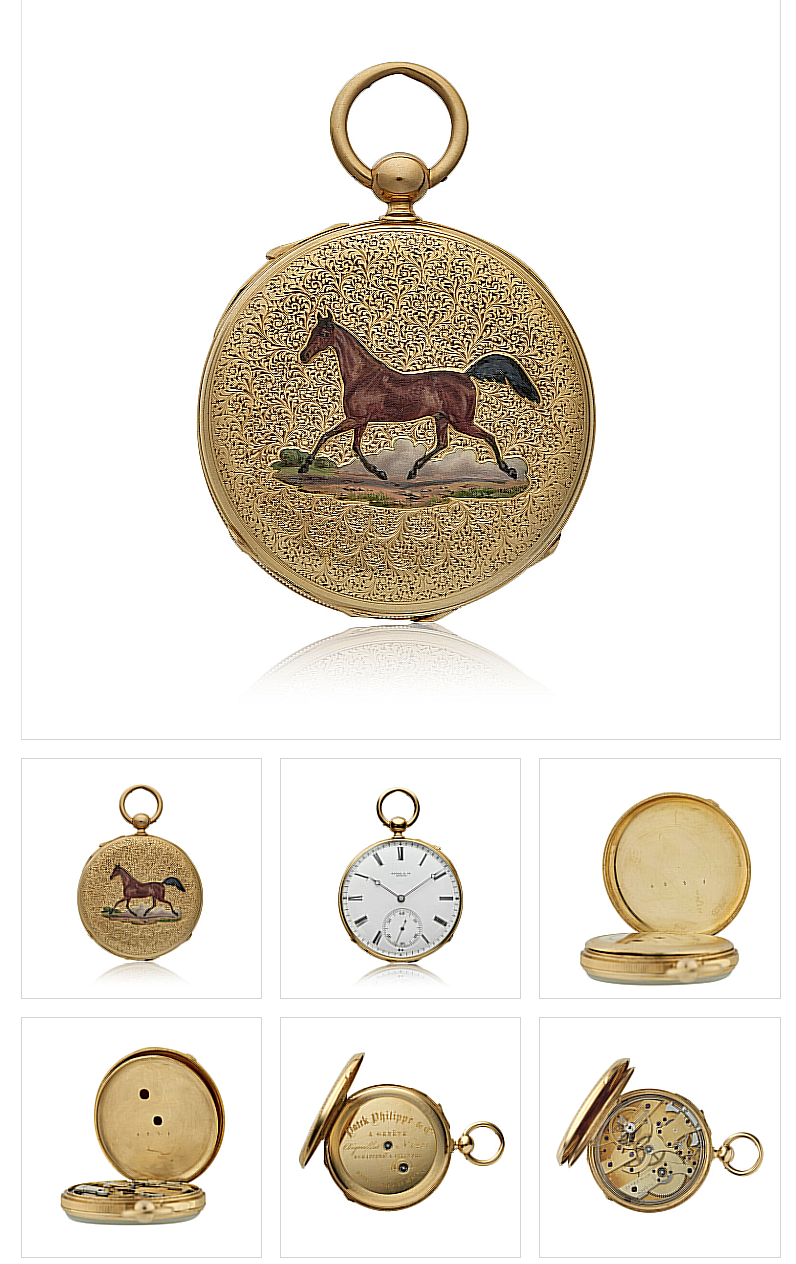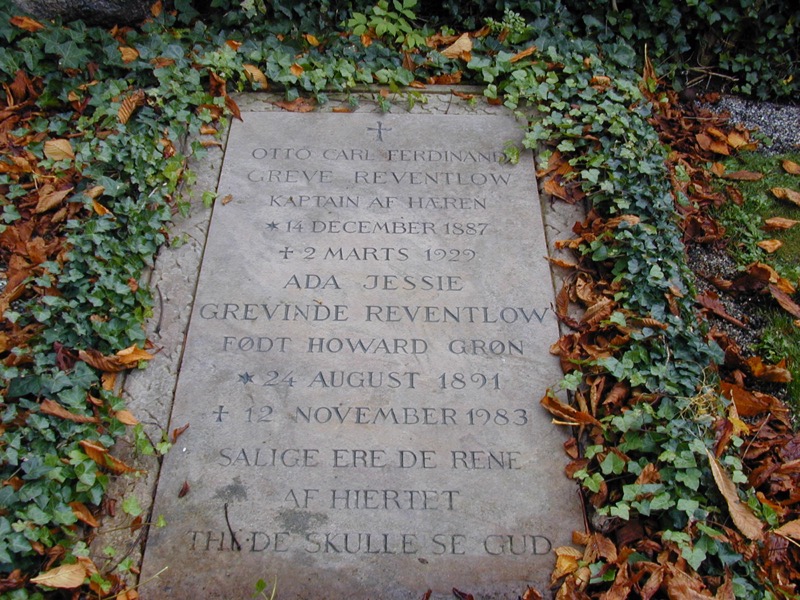PortrætterSlægten Reventlow:
 Otto Carl Ferdinand Reventlow(1887 - 1929) Otto Carl Ferdinand Reventlow(1887 - 1929)
Andre slægter:
 Henriette Auguste Luise von Helldorff(1840 - 1916) Henriette Auguste Luise von Helldorff(1840 - 1916)
Beskrivelse fra Sothebys auktioner 2022
PATEK PHILIPPE QUARTER REPEATING POCKET WATCH
Patek Philippe 18k gold and miniature enamel quarter repeating key wind and key set pocket watch, made in 1850 sold in 1852
History. Beauty. Rarity. Intrigue. Not to mention a minute repeater with miniature enamel and engraving! First, the history: this watch belonged to Henriette Auguste Luise von Heimbruch, born von Helldorff. Born to a noble family in 1840 in Lower Saxony, she was in the inner circle of European royalty and said to be celebrated for her beauty and elegance. Based on genealogical records, she was “lady-in-waiting to Princess Mary and was appointed by George V in 1866 as Honorary State Lady with the rank corresponding to this position” Nicknamed Lonny, she was married to Karl Johann Christian von Heimbruch and this mid-19th century power couple became part of the inner circle of the Hanoverian royal family. She died in May 1916.
In terms of beauty, this was appropriately matched to its owner. The case back is hand engraved in a vermicelli pattern with an exquisite miniature enamel painting of a horse in the center, presumably a horse very dear to Lonny. The elegance of the watch preserved with its original box from 1852 can not be overstated.
In terms of horological rarity, this watch has multiple features that make it befitting of its royal provenance. The fact that is an early quarter repeater from Patek Philippe first and foremost is exciting for those in the know. Consider the dial and movement is signed Patek & Cie which is typical for the era for a watch made in 1850, and then consider that on January 1, 1851 the company’s name was changed from Patek & Cie to Patek, Philippe & Cie. When this watch was sold in early 1852, it was supplied with a case signed ‘Patek, Philippe & Cie” In short, this is one of the first true ‘Patek Philippe’ watches and in all likelihood it was personally handled by both Antoni Patek and Adrien Philippe.
The fact that this important watch was sold (or gifted) to noblewoman of elegance and taste is no surprise. Remember it was in 1851 that Queen Victoria of the United Kingdom literally bought herself a Patek Philippe and another for her husband Prince Albert. Just a few years later in 1868, Patek Philippe made the first true Swiss bracelet watch for the Hungarian Countess Koscowicz. Patek Philippe was committed to catering to and selling to the ladies high end market from its earliest days.
So now a new owner has the chance to own a piece of Lonny’s legacy, a watch of beauty, complication and rarity that allows you to own a true museum watch.
Slotte og Herregårde
 Emkendorf Emkendorf
Heraldik
 Våbenskjold for grevskabet Hardenberg-Reventlow Våbenskjold for grevskabet Hardenberg-Reventlow
Grevskabet Hardenberg-Reventlow var et dansk grevskab oprettet 13. december 1815 for Christian Henrik August Hardenberg-Reventlow af hovedgårdene Hardenberg (Krenkerup), Christiansdal, Nielstrup, Rosenlund, Nørregård og Sæbyholm. Grevskabet blev opløst ved lensafløsningen i 1924.
Gravsten og epitafier
 Otto Reventlow og Ada Reventlow f. Grøn Otto Reventlow og Ada Reventlow f. Grøn
Tillitse Kirkegård, Dannemare, Lollands Sønder Herred, Maribo Amt, Danmark |